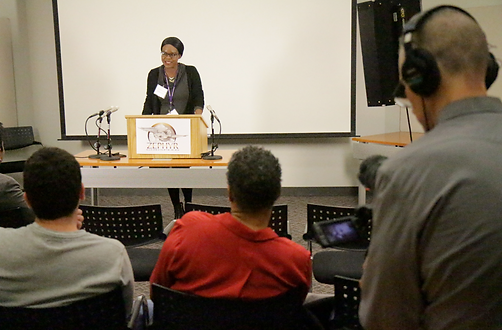
"I kept forgetting that it wasn't real. I was sweating."
- Crisis Participant
Northwestern University
Zephyr Crisis Simulation
In 2018, we created a realistic crisis simulation as a day-long workshop for students and corporate professionals. This has since been refined and repeated about a dozen times. Our audience for the first three simulation runs have been masters in communication students, the Northwestern Global Marketing and Communications Department, the NU Department of Media Relations, and a group from Lettuce Entertain You.
We developed a series of deliverables that simulated a narrative about a data breach for a fictitious airline, Zephyr Air.
Creating the Brand
In order to truly make students forget that this was fake, we needed to create a completely immersive experience. We started by designing the brand and identity of Zephyr Air, including:
-
Logo design
-
Branding manual
-
Website
-
A commercial for the airline
The four of us shared all the work in the production. From scripts and acting, to direction and aesthetics, our team had a hand in every last detail. Although I enjoyed every aspect of the process, I feel my heaviest lifting was in video creation and curriculum design.
I created this video, and several like it for the simulation. This includes graphics, editing, scoring, title cards, etc. The commercials were particularly fun to make. As the videos are viewed by the participants, the narrative unfolds, and they are required to respond.
Creating the Story
Once the branding was in place, we scripted a narrative and filmed a clutch of videos that would move the story forward for the participants. This included news reports, TMZ-style gossip segments, press conferences, ambush interviews of the CEO, television commercials for both the airline, and one of its competitors, and other assets that built the illusion that none of this was fiction.
We also involved some faculty and staff that had some acting experience to flesh out the roles, and even planned to have them reprise these roles on the day of the simulation.

In addition to video and audio work, I was also asked to act. I got to play securities CEO, Zed Maytal, and dialed up my father's accent for my performance.
Creating the Rubric
We wanted to give our participants clear guidelines and goals for their time in our simulation. We made a 48-page crisis manual that covered terms and terminology, best practices for crisis escalation, worksheets for responses and records, and a whole host of useful curriculum and assessment information.
All of the crisis manual forms and documents that were to be filled out were also converted google forms. This was so that we could track every the participants actions and responses to the crisis down to the minute for future assessment.
A quick 10-second flip through of the simulation manual participants were given in advance to prepare them for both the simulation, and how they would be assessed.

A Day of Crisis

Two of the crisis team rooms, where we deployed the videos to their monitors simultaneously, called to get statements for the press, had actors as C-Suite execs visit and call, and generally pushed their buttons a bit during the simulation.
Once everything was ready to roll, each crisis group, was split up into teams and placed into separate rooms for the duration of the day. From then on, we were in the Operations room, deploying videos in time, calling in as members of the press, or as part of the C-Suite of Zephyr Air.
It was a high-intensity, hands-on experience for all, and required detailed notes, the ability to improvise and think on the spot, and a bit of a playful attitude, as this was also supposed to be a bit of fun.
Keeping it Real
Keeping it Real

The press conference room, where participants were interviewed, filmed, and grilled by the fictional media team on the latest happenings in the Zephyr Air scandal.
In addition to the simulation, we also set up a room for the teams to hold press conferences. They were grilled by the actors playing journalists, they were ambushed on their lunch breaks by newsmen looking for statements, and were tested to the edges of their professional knowledge.
As different groups reacted to the crisis in different ways, it was up to us and our team to respond accordingly. We were also in constant email contact with the participants, and were tallying and scoring their responses according to the rubric we developed, as well as a crisis escalation curve we created with assistance from some experts in the field.
Assessing the Simulation
We designed the assessment tool by consulting with a series of academic and practitioner crisis communication experts. They applied the risk matrix from our manual and the clarity of 20/20 hindsight of seeing the full story arc/media inject sequence and advised us on how this crisis scenario unfolded according to the matrix. We created a mean or curve of the expert opinions and noted them alongside the story in the document. We populated their timed/reported moves and scored them against the expert curve.
After all was said and done, we held a debriefing with all the teams over dinner, and discussed what they did wrong and right. We also asked for and received feedback about how the simulation went. To create something like this requires testing and refinement with the hopes that every time the simulation is run, it gets a little better and a little more in-depth.
Participant teams were also sent the timed responses we collected with some helpful criticism of how they day played out.
In all, it was a remarkably rich and rewarding experience for all involved, and I look forward to more.